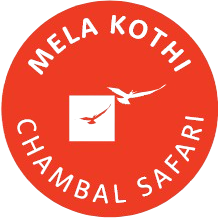The Chambal River, known in ancient Indian texts as Charmanyavati, is believed to have originated from the blood of thousands of cows sacrificed by the Aryan King Rantideva. This “unholy” beginning may have
contributed to its survival, remaining untouched and unpolluted through the centuries. Today, Chambal is one of India’s most pristine rivers.
The Chambal Ravines (altitude 200-500m), formed by centuries of soil erosion by flood and rainwater, create an extraordinary landscape of intertwining mud cliffs. These rugged ravines, covered in tropical dry scrub
forest, provide a rich habitat for an array of birds, mammals and reptiles....read more 
The National Chambal Sanctuary (NCS), spanning a 400 km stretch of the river and extending 1 to 6 km on either side, covers an area of 1235 square kilometres. Granted Protected Area Status in 1979 to help revive
Gharial populations decimated by indiscriminate poaching, the NCS is an IUCN Category IV (Managed Nature Reserve) lying in the Indus-Ganges Monsoon Forest belt.
The Sanctuary stretches from downstream of the Kota barrage in Rajasthan to its lower limit near Panchnada, around 5 km beyond the confluence of the Chambal and the Yamuna rivers at Bhareh in Uttar Pradesh.
The NCS is one of the last surviving habitats of the Gangetic River Dolphin.
Provides protection for 1700 Gharials & 400 Marsh Crocodiles.
Home to eight species of Turtles and the Smooth-coated Otters.
The Sanctuary boasts of a rapidly increasing and impressive bird list of over 330 species of resident and migratory birds, and is gaining a reputation as one of the most reliable places to see the Indian Skimmer.
read less 

 CHAMBAL, UTTAR PRADESH
CHAMBAL, UTTAR PRADESH

 EXPERIENCE
EXPERIENCE 




